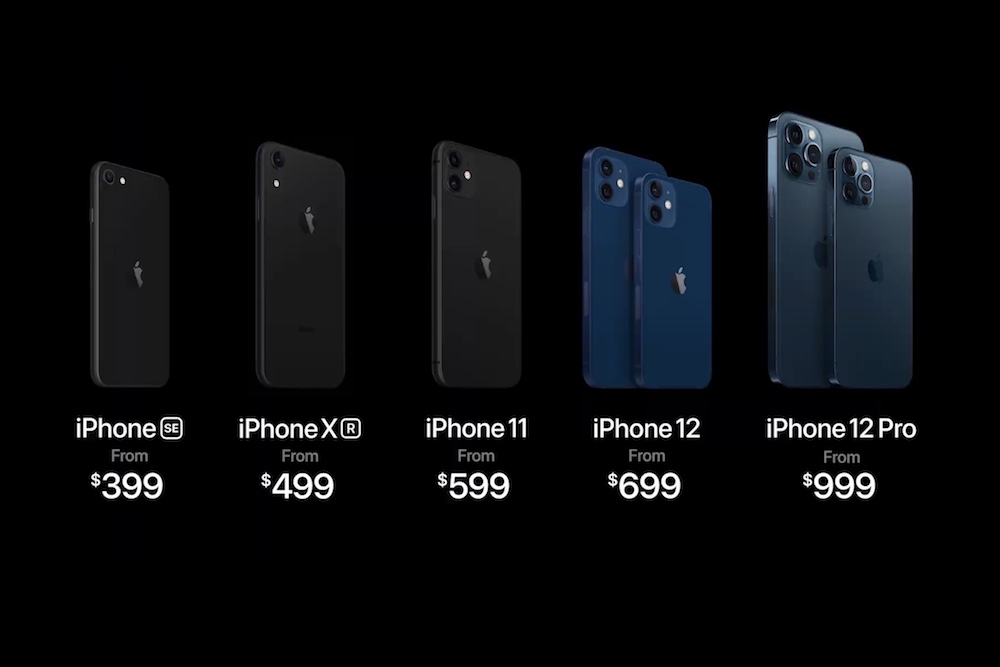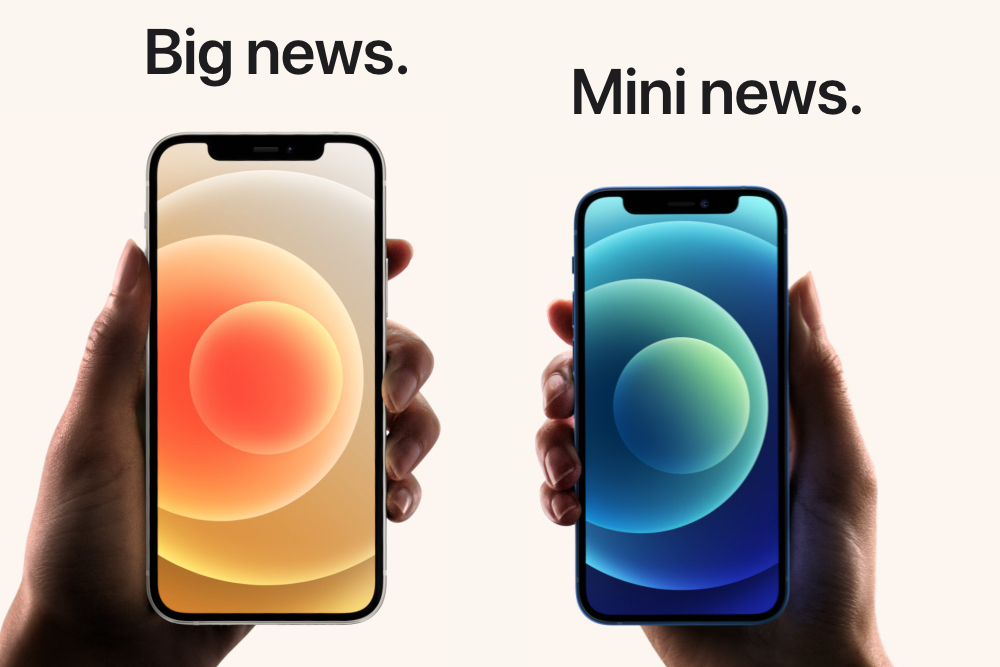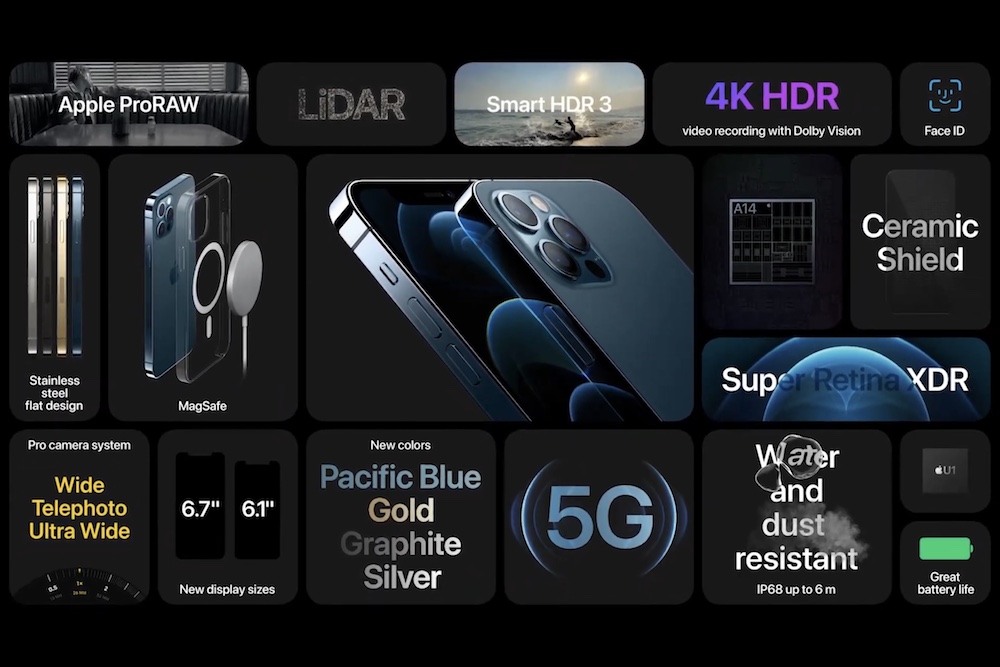Apple now has so many iPhone models that the once logical range has become needlessly confusing. The breadth of “choice” appears to be more about filling all available price points, rather than delivering a set number of devices to make it easy for potential buyers to navigate through when out shopping.

Choice is essential, of course, but it shouldn’t only be about ticking price boxes, and Apple has traditionally always been great at gently nudging people toward the right phone for them by showing the clear benefits between the different models. Now though, nothing is clear at all.
What have we got?
Looking only at price, the iPhone lineup is logical. If you’ve got $399 to spend, then you can buy the iPhone SE 2020. If you can stretch to $499, the iPhone XR from 2018 is for you, or for another $100 you could buy last year’s iPhone 11. For $699, there’s the new iPhone 12 Mini, for $799 the iPhone 12 is yours, or for $999, the iPhone 12 Pro comes into view. Finally, for the big spenders, there is the $1,099 iPhone 12 Pro Max.

As you can see, the pricing structure makes complete sense. Looked at it this way, there’s something for everyone. Except without cheating by looking up the specs, what’s the advantage of buying the iPhone 12 Mini over the iPhone 12? Or the iPhone XR over the iPhone 11? The differences are sometimes quite significant, and other times almost nonexistent. Simplicity was once one of Apple’s big selling points, but this has been eroded away by its collection of seven current devices.
Apple has even canceled out the easiest buying decision in the smartphone industry by making the iPhone 12 Pro Max’s camera ever-so-slightly more technically impressive than the iPhone 12 Pro’s camera. Last year, if you wanted a larger screen, you bought the 6.5-inch Pro Max, but if you didn’t, you could still happily buy the 5.8-inch Pro and not miss out on any other features.
This year, the iPhone 12 Pro Max not only has a larger 6.7-inch screen, but it also has a different telephoto camera with a 5x optical zoom range and a 12x digital zoom, plus the new Sensor-shift optical image stabilization technology. Apple claims the battery will last longer too, with 20 hours of claimed video playback compared to 17 hours on the iPhone 12 Pro.
The fact that these little differences exist between two phones at all is confusing, and it’s impossible to know whether you’ll really need the extras in the Pro Max’s camera at all. Frustratingly, there’s likely no technical reason why the iPhone 12 Pro can’t support exactly the same camera tech as the 12 Pro Max. It’s seemingly only there to help sell the larger, more expensive model, and to roundly confuse the average shopper.
Why is the iPhone 12 Mini a thing?
Now that the iPhone 12 Pro range is already confusing, Apple has decided to differentiate the iPhone 12 and the iPhone 12 Mini only by their size, and thereby confuse everyone even more. The iPhone 12 Mini has a 5.4-inch screen, and the iPhone 12 has a 6.1-inch screen. Apart from the obvious weight and overall size differences, they’re the same.

Why the iPhone 12 exists in its current form at all is baffling, as the iPhone 12 Pro has a 6.1-inch screen and so does the iPhone XR, so Apple now sells three iPhone models with a 6.1-inch screen. If Apple wanted to make a midsize phone between the iPhone SE and the iPhone 12 Pro, just make the iPhone 12 the 5.4-inch model and be done with it, rather than introducing yet another name into the mix. Except by doing that, it would leave a slot open in its ever-so-neat pricing structure, and we can’t have that.
There are many differences between them all too, but at first glance — especially from the front if you’re set on a 6.1-inch phone — you won’t have a clue what they are. That’s fine if you’re a spec-sheet fiend, but many iPhone buyers are not. You’ve really got to be a dedicated geek to grasp the differences between the models based on the spec sheets as they’re full of jargon, numbers, and spurious claims based around the introduction of
Missing the big picture
Even Apple’s October 3 launch event didn’t help clear things up. It was extremely tech-heavy, with a focus on minute details rather than the larger picture. Apple has always been good at showing how regular people can benefit from new features, without hitting us hard over the head with numbers and acronyms, but for the iPhone 12, it got bogged down with what the engineers thought was cool.

For example, the iPhone 12 Pro has a lidar sensor, just like the iPad Pro. Apple didn’t really tell anyone why the lidar existed on the iPad, but for the iPhone, it showed us how we could all “outline process flows” and “reduce costs by 90%” when we rearrange our lab spaces. Thanks, that has totally cleared up why I need it. That was after frying our brains with the wonders of
Veering off course
In 2015, Apple released the
This year, a 5.4-inch iPhone 12 should have joined the iPhone 12 Pro and iPhone 12 Pro Max, and should have only been differentiated by the screen and battery size. Instead, we have so many names, so many variations, so many prices, and so much confusion about which model is right. What was once one of the clearest, most buyer-friendly phone ranges has become too dense, and it’s at risk of turning anyone who doesn’t simply want to buy the most expensive model right off.
Editors' Recommendations
- One of the most iconic iPhone accessories is back — and it’s great
- Are you having iPhone alarm problems? A fix is coming soon
- This one Apple Fitness feature completely changed how I exercise
- An Apple insider just revealed how iOS 18’s AI features will work
- 5 phones you should buy instead of the iPhone 15



